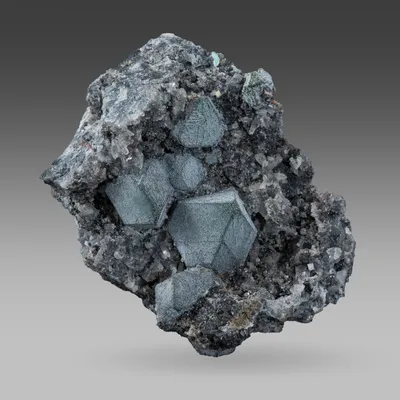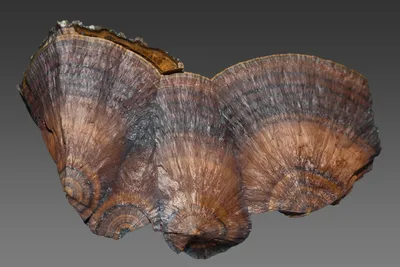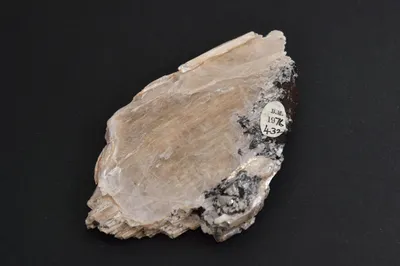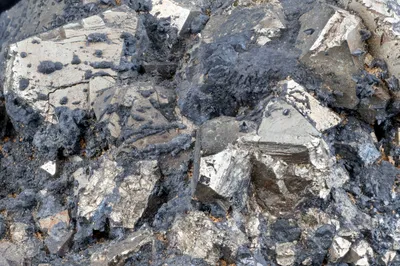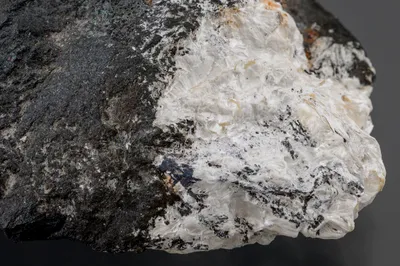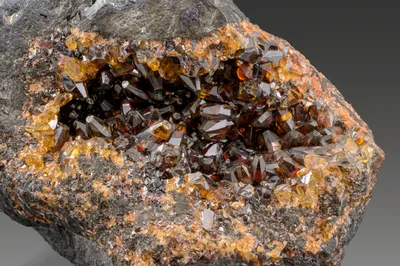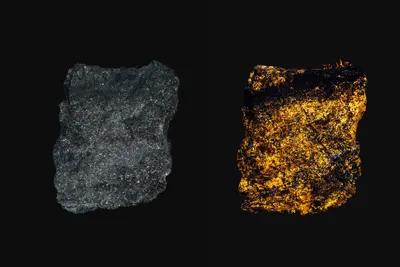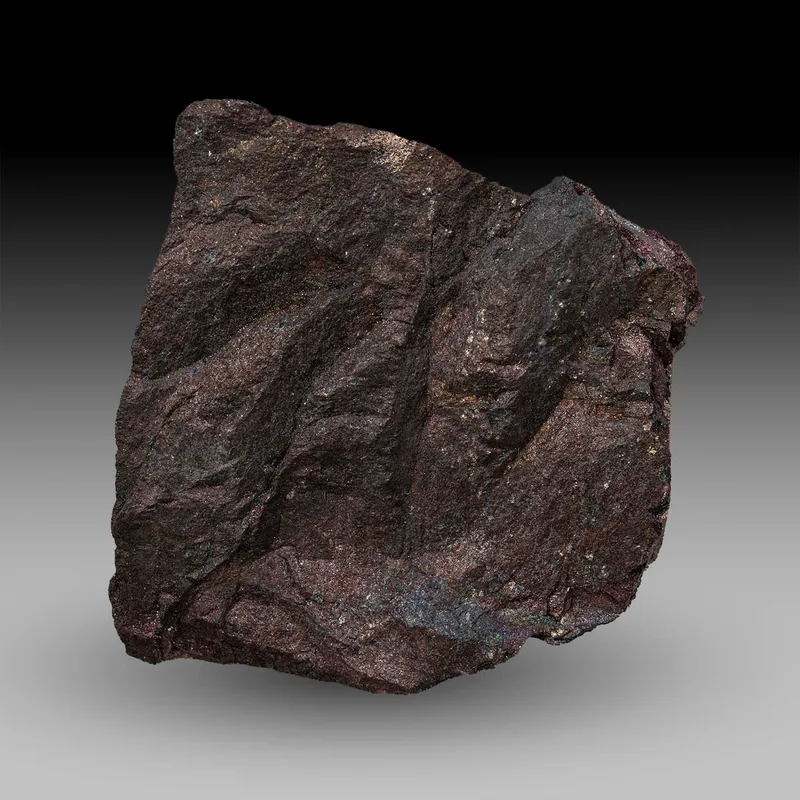
Image Credit: Malcolm Southwood
Mineral Species
Renierite
Type Locality
No
Composition
(Cu1+,Zn)11(Ge4+,As5+)2Fe4S16
Crystal System
Tetragonal
Status at Tsumeb
Confirmed
Abundance
Common
Distribution
First (?), second and third oxidation zones; sulphide ores
Paragenesis
Hypogene
Entry Number
Species; TSNB300
General Notes
The somewhat tortuous history of the discovery of renierite has been summarised by Sclar and Geier (1957). "Orange bornite" had originally been described by Murdoch (1916) as a poorly defined copper-iron sulphide. Vaes (1948) was the first to conduct a satisfactory analysis of "orange bornite" from the Prince Léopold mine in what is now the Democratic Republic of Congo. He re-described the physical and optical properties and named the mineral reniérite (now renierite) for Armand Marie Vincent Joseph Reniér (1876-1951), a former director of the Belgian Geological Survey.
It was not until 1953, however, that TCL mineralogist Bruno Geier demonstrated that much of the "orange bornite" observed at Tsumeb was in fact renierite. Sclar and Geier (1957) recorded that Geier first noticed "… microscopic grains of a distinctive copper-iron-germanium sulfide associated principally with galena, tennantite, germanite and sphalerite and subordinately with bornite, chalcopyrite, chalcocite and pyrite" during an investigation of germanium-rich ore from 24 Level in 1952. Geier initially thought this could be a new species to which he designated a working name "Mineral X". However, X-ray diffraction studies of germanium sulphides by Murdoch (1953) and continuing investigations at Tsumeb showed that Mineral X is equivalent to renierite as described by Vaes (1948).
Sclar and Geier (1957) considered renierite to be an alteration product of germanite, forming rinds around germanite inclusions in tennantite, bornite, sphalerite and galena. They proposed a paragenetic sequence for the germanium rich sulphide ores as follows:
pyrite >> (germanite + bornite + enargite) >> sphalerite >> tennantite >> (chalcopyrite + unidentified mineral) >> renierite >> (digenite + galena)
Geier (1962) noted that renierite is magnetic and that this property can be exploited for ore beneficiation purposes.
Bartelke (1976) observed that renierite usually occurs as massive sulphide material, typically associated with other sulphide minerals including germanite and gallite. Very rarely, crystals to a few µm in size can be found intergrown with other sulphides. Pinch and Wilson (1977) recorded that small crystals of renierite to 1.5 mm have been found in vugs.
Ramdohr (1980) noted a localised abundance of renierite as exsolution bodies in sphalerite.
Lombaard et al. (1986) observed that renierite was essentially absent above 15 Level but present in the sulphide ores from 15 Level down to 40 Level. They pointed out large fluctuations in the germanite:renierite ratio, from 2:5 on 20 Level, to 1:28 on 30 Level.
A specimen in the Pinch Collection (MGMH 2020.7.3298) comprises tetrahedral crystals of renierite (to 1.5 mm) collected in 1967 by Bruno Geier on 20 Level.
Renierite is specifically mentioned as a component of the type assemblages for bartelkeite (Keller et al. 1981a); brunogeierite (Ottemann and Nuber 1972); calvertite (Jambor et al. 2007); eyselite (Roberts et al. 2004); gallite (Strunz et al. 1958b); gallobeudantite (Jambor et al. 1996); galloplumbogummite (Schlüter and Malcherek 2011); otjisumeite (Keller et al. 1981c) and stottite (Strunz et al. 1958a).
Potential for confusion between the names renierite and reinerite is noted.
Associated Minerals
anglesite; argutite; argyrodite (?); bartelkeite; bornite; briartite; brunogeierite; calcite; calvertite; chalcocite; chalcopyrite; digenite; enargite; eyselite; galena; gallite; gallobeudantite; galloplumbogummite; germanite; goethite; hematite; leiteite; ludlockite; mawsonite; molybdenite; otjisumeite; pyrite; plumbogummite; pyromorphite; quartz; schaurteite; siderite; silver; söhngeite; sphalerite; stolzite; stottite; tennantite-(Zn); thaumasite; tsumgallite; tungstenite



